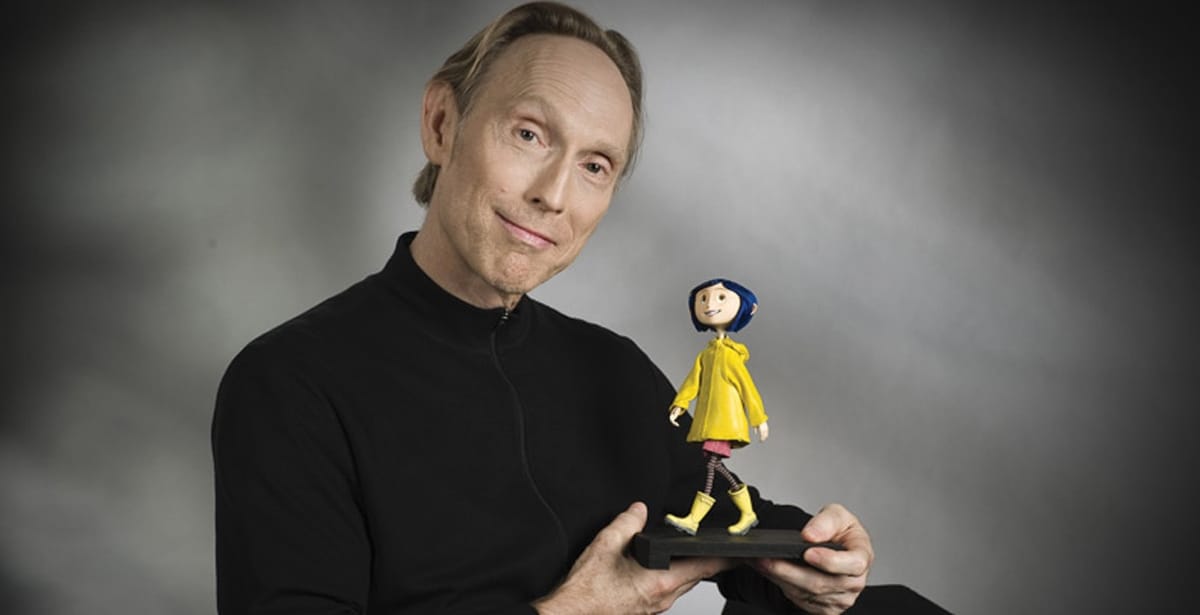“Wendell & Wild” Diversifies Stop-motion Genre
Henry Selick, creator of iconic stop-motion animation films like “Coraline,” teamed up with Jordan Peele for “Wendell & Wild.” Erin Williams ’26 reviews the movie, which can sometimes feel bloated but is nonetheless an enjoyable ride.

I was very excited when I learned that Henry Selick was back in the director’s chair after a 13-year-long hiatus with a new stop-motion film “Wendell & Wild.” Selick’s other movies include ghastly favorites like “The Nightmare Before Christmas,” “James and the Giant Peach,” and “Coraline.” These are all films that I and many others consider staples in the stop-motion animation genre. Because “Coraline” is my favorite stop-motion movie, I was hopeful going into Selick’s new film, especially when I learned that he had teamed up with horror mastermind Jordan Peele to make it.
And, sure enough, “Wendell & Wild” did not disappoint.
Streaming on Netflix, “Wendell & Wild” is a film about confronting your demons, literally and figuratively. It follows the life of Kat Elliot (Lyric Ross) after the death of her parents and the economic downfall of her town, Rust Bank. Kat has been in and out of juvenile detention centers for a majority of her life, and receives a new chance at life at an all-girl’s Catholic boarding school. She soon learns that she is a “hell maiden,” a person who has the ability to summon demons. Cue the shenanigans of demon brothers Wendell (Keegan-Michael Key) and Wild (Jordan Peele), who strike a deal with Kat to summon them to the land of the living in exchange for bringing Kat’s parents back to life.
Though some aspects of “Wendell & Wild” are similar to his past works, Selick also presents rebellious characters and explores intense politics that are not typically present in the stop-motion industry. It’s apparent that Selick is trying to break out of a mold that many other stop-motion films seem to find themselves stuck in. “Coraline,” “Paranorman,” “Frankenweenie,” “Corpse Bride,” “James and the Giant Peach,” and “The Boxtrolls” are all beloved stop-motion films with compelling plots, but they all lack something important: diverse representation.
All of these stop-motion films feature a predominantly white cast, with the only exception I can even think of being “Kubo and the Two Strings.” But even “Kubo and the Two Strings” is mostly made up of white voice actors. Tim Burton, famous for his stop-motion work, claimed that the inclusion of POC characters in his films would feel like forced representation.
The lack of diversity is often chalked up to the necessities of the art style that directors like Burton use in their films. Because these movies often deal with spooky subjects like ghosts and the afterlife, characters are designed to have ghostly pale skin and sunken faces. But the claim that deathly features only apply to white people doesn’t make sense. After all, everyone experiences death.
Selick attempts to refute misguided opinions like Burton’s in “Wendell & Wild,” and does so wonderfully. The cast consists mostly of BIPOC voice actors. It’s a great first step towards equitable representation in an industry that clearly lacks it.
The film also made history by featuring the first trans character in stop-motion. Raúl (Sam Zelaya) is a fellow student at the Catholic school Kat attends. A talented artist and good-natured friend, Raúl is able to help Kat as she attempts to resurrect her parents and defeat Klax Korp. Although this sort of representation can have a huge impact for trans viewers, it also feels effortless in the film. It’s a reassuring feeling to know that a new generation of kids will sit down to watch this movie on Halloween and find characters to resonate with, regardless of race and gender identity.
Another aspect of the film I enjoyed was its focus on some interesting (yet pretty intense) themes. The two antagonists are private prison owners, and the movie wastes no time calling out their industry. By the end of the film, their private prison company, Klax Korp, meets its demise, and the town of Rust Bank is finally able to start rebuilding again. The movie also explores issues like the school-to-prison pipeline, the devastating effects of capitalism on poor communities, and the intersection of grief and guilt when dealing with loss.
I think Selick does a nice job of bringing these topics to light even though the movie is mostly geared towards children. As the characters go through revelations about each societal issue, Selick guides the audience towards those same realizations.
The movie did feel clunky at times, which makes sense because it’s absolutely bursting at the seams with different themes and ideas. It’s a difficult task to cover prison pipelines, the private prison industry, corruption within religious institutions, and interpersonal issues like grief, all in an hour and 45 minutes. Suffice it to say that I found myself winded by the time it was all over.
However, I think that the movie is so enjoyably bizarre and bizarrely enjoyable that I can ignore most of my complaints. It’s clear Selick isn’t really trying to please anyone with this movie, similar to the no-nonsense attitude of punk-rocker Kat. Instead, he is trying to call out every corrupt industry and institution he could within the timeframe of the film. And honestly? I can respect that.
“Wendell & Wild” has received lower critic scores than most other stop-motion films, and I would have liked to have seen a stronger focus on each of the characters and controversial issues that the movie explores. But I think that “Wendell & Wild” brings something undeniably unique to the table, making up for its shortcomings with pure, unashamed creativity. I look forward to what Selick (and Peele) bring to the screen next.





Comments ()